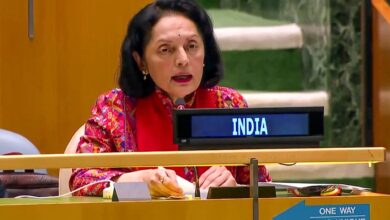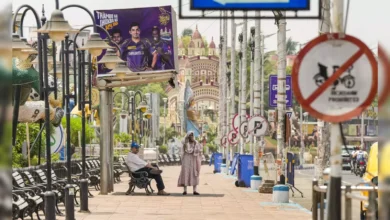India’s proposed broadcast bill extends to social media users and streaming platforms
India's proposed Broadcasting Services (Regulation) Bill 2023 has sparked debate as it aims to extend regulatory control to social media users and streaming platforms engaged in news and current affairs.

India is poised to introduce the Broadcasting Services (Regulation) Bill 2023, a groundbreaking legislative move that could significantly expand the regulatory reach to encompass social media users and streaming platforms engaged in news and current affairs content dissemination.
The bill, if enacted, would extend its ambit to cover individuals and accounts on social media platforms such as YouTube, WhatsApp, and Telegram that broadcast news and current affairs. Additionally, streaming giants like Netflix, Amazon Prime Video, and Disney+Hotstar would fall under its purview, ushering in a regulatory framework for over-the-top (OTT) platforms and other broadcasting services.
According to the provisions outlined in the bill, anyone broadcasting news and current affairs content, irrespective of the platform, will be treated as an OTT broadcaster. This classification implies that both streaming platforms and online news organizations, previously categorized as publishers, will now be considered broadcasters, subject to similar obligations.
Clause 20 of the proposed bill specifies, “Any person who broadcasts news and current affairs programs through an online paper, news portal, website, social media intermediary, or other similar medium … shall adhere to the Programme Code and Advertisement code referred to in Section 19.” While the definition of an OTT broadcasting service excludes social media intermediaries, experts suggest that clause 20 could encompass them if they broadcast news and current affairs programs.
This implies that independent journalists utilizing platforms like YouTube and Instagram for news dissemination may find themselves subject to the same obligations as traditional OTT broadcasters.
Moreover, citizen journalists engaging in news content dissemination as part of a “systematic business, professional, or commercial activity” would also be subject to these obligations, as per the bill.
However, the bill appears to have some caveats. It exempts individuals who occasionally post public interest content or stream live events, with a less clear stance on whether a journalist’s Twitter account featuring news-related tweets would attract the obligations of an OTT broadcaster.
Gowree Gokhale, a partner at Nishith Desai Associates, noted, “You could get included, but that will be determined by how they notify the threshold for OTT platforms and if they will have a lower one for journalists.”
Financial influencers may find themselves subject to OTT broadcaster obligations under the bill. Remarkably, newspapers and their e-replicas would be exempted from these regulations. While YouTube, as a social media intermediary, may not comply with the act, the bill could impact the paid version of YouTube, YouTube Premium, classifying it as an OTT broadcasting service.
In an intriguing twist, even the official WhatsApp channel of the prime minister could find itself subject to the same obligations as major streaming platforms like Netflix and Amazon Prime Video, as suggested by an expert in the report.
As India navigates this potential regulatory shift, the proposed bill underscores the evolving landscape of media regulation, extending its reach to encompass the dynamic realm of social media and streaming platforms, raising questions about the balance between free expression and regulatory oversight in the digital age.
You might also be intersted in – Government unleashes bold initiative against deepfakes on social media



